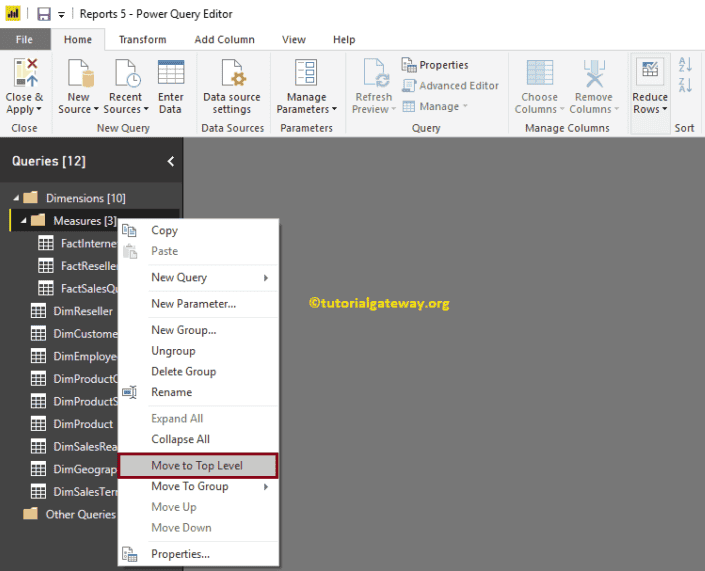Create Query Groups in Power BI
This article shows you the steps required to Create Query Groups in Power BI with an example. In general, the tables that we load from the source arranged in alphabetical order. However, in real-time, we might have to group those tables based on the content.
For example, arrange Dimension tables in one group and fact tables as another.
How to Create Query Groups in Power BI
To create the Power BI query group on existing tables, please click the Edit Queries option under the Home tab.
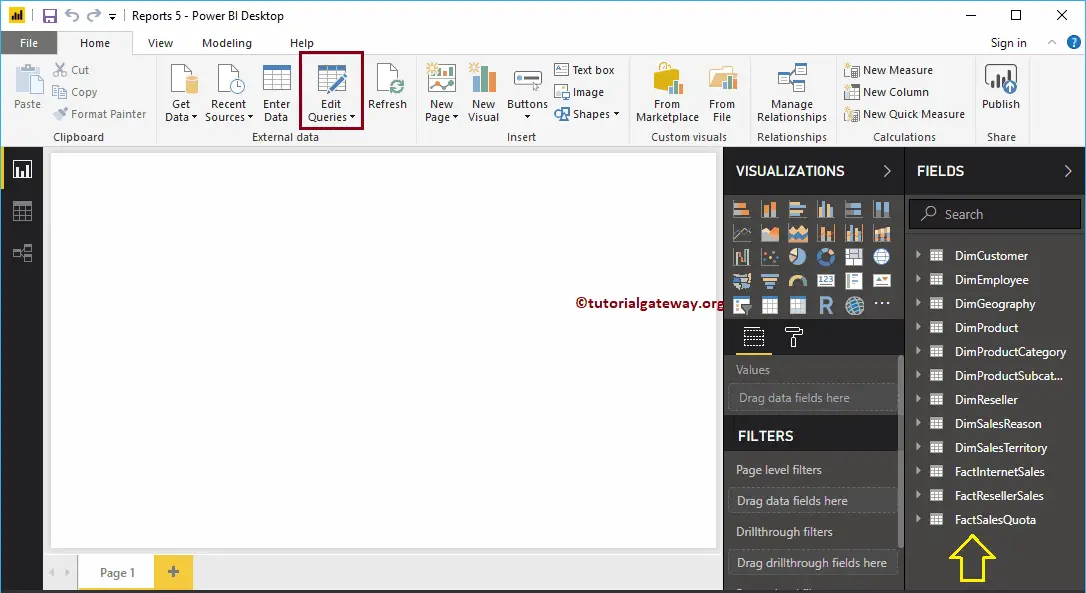
Clicking Edit Queries option opens a new window called Power Query Editor. Under the Power BI Queries section, you can see the list of available tables.
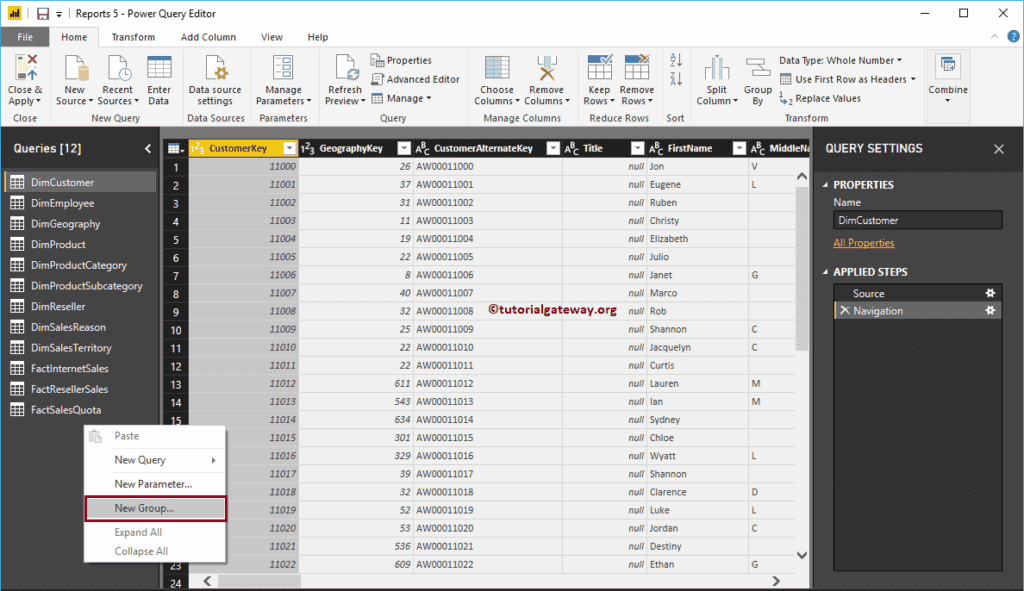
There are a couple of ways to create a new query group
The first approach to Create Power BI Query Group
To create a new query group, right-click on the empty space under the queries section and select the New Group option from the context menu.
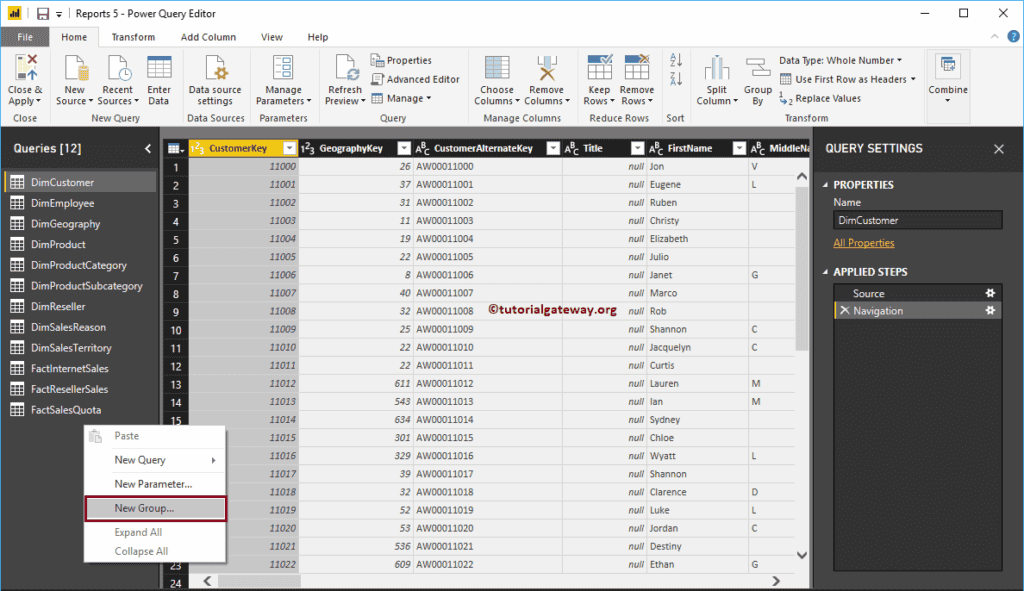
Selecting the New Group option will open the following window. Please specify the Group Name and the description. For now, we are assigning the Dimensions as the Group name.
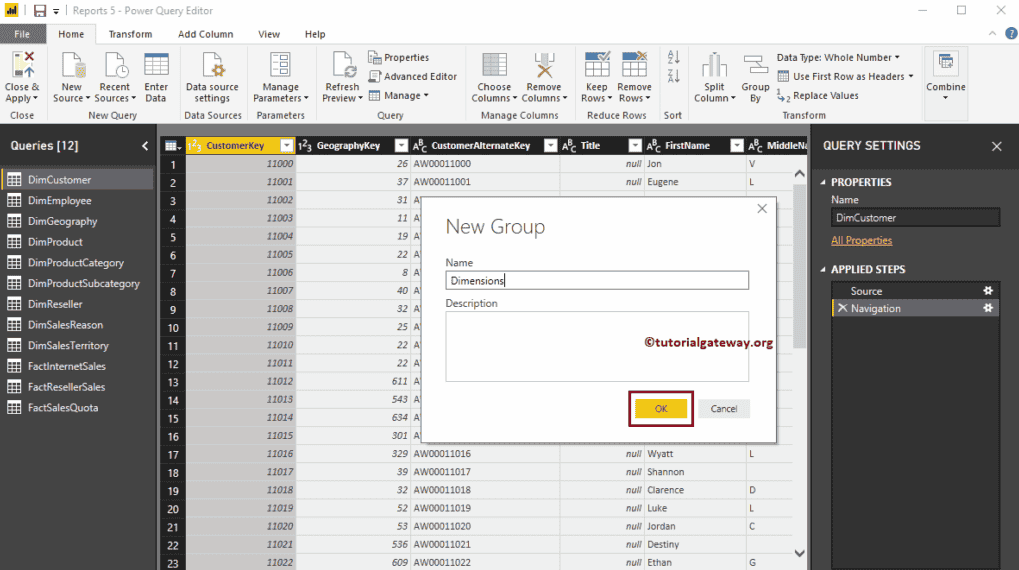
You can see the New folder (Query Group)
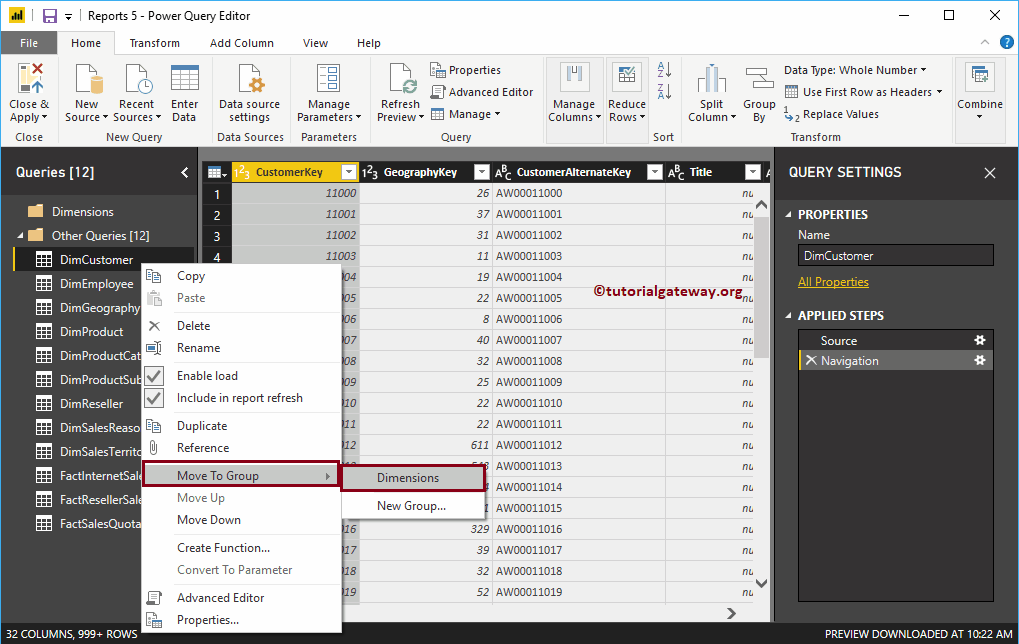
The first approach to add Tables to Query Groups in Power BI
Right-click on the table that you want to add opens the context menu. Please select the Move to Group option, and then select Group Name, i.e., Dimensions.
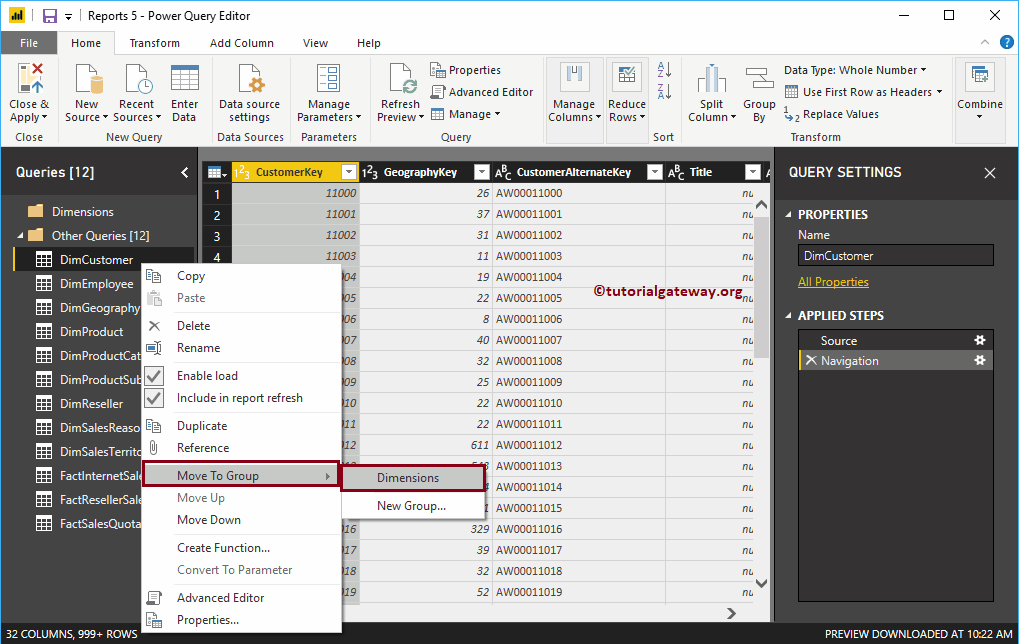
Now you can see the DimCustomer table under the Dimensions group
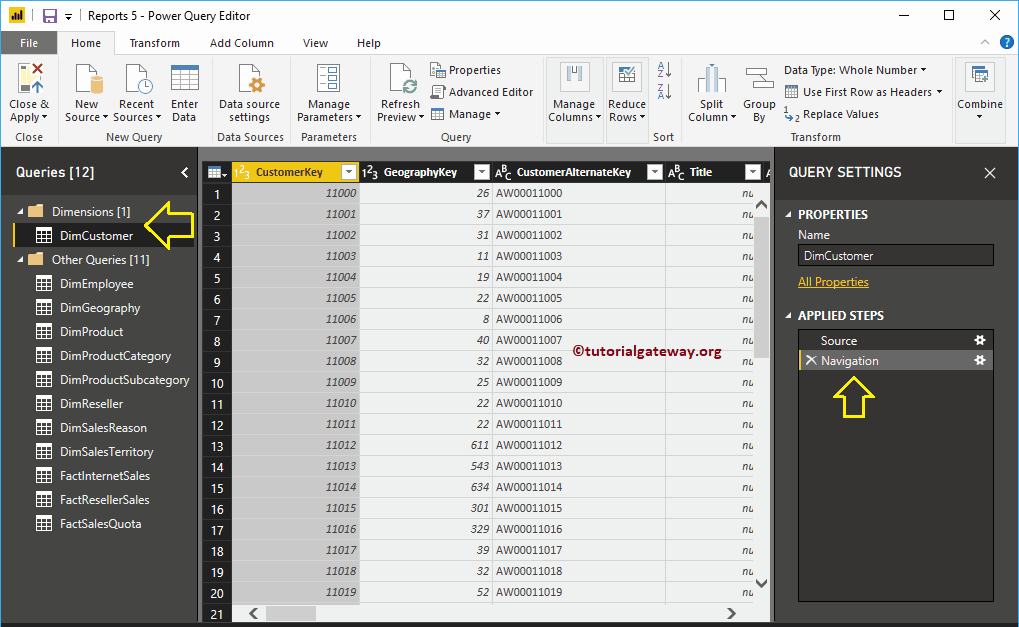
The second approach to add Tables to Query Groups in Power BI
Drag the required table, and Drop under the Query group automatically add that table to the query group. For the demonstration purpose, we are dragging the Dim Employee table to the Dimension group.
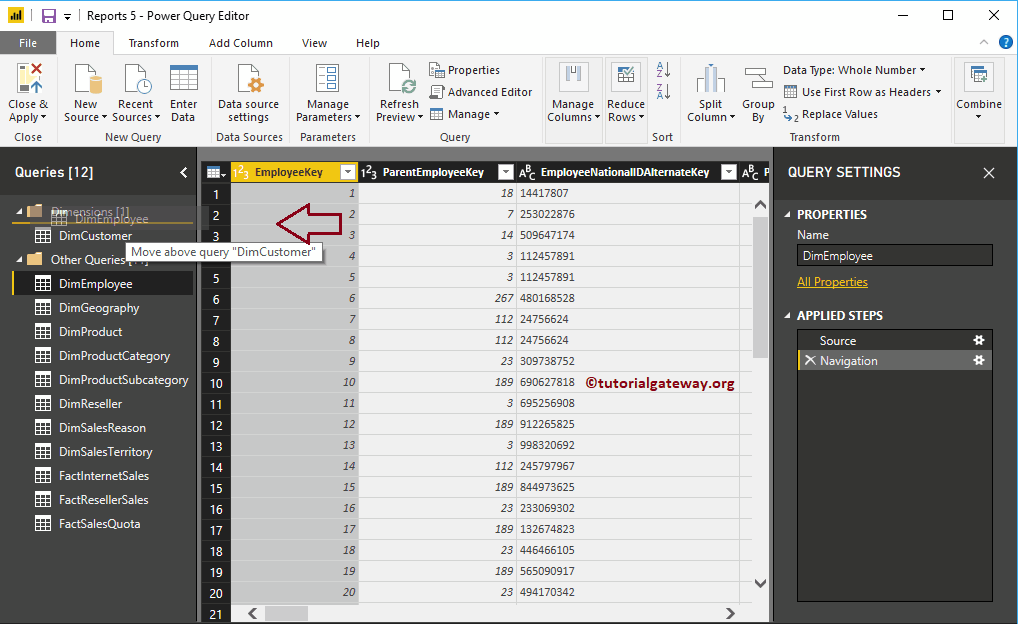
Similarly, we added the remaining dimension tables to the Dimension query group.
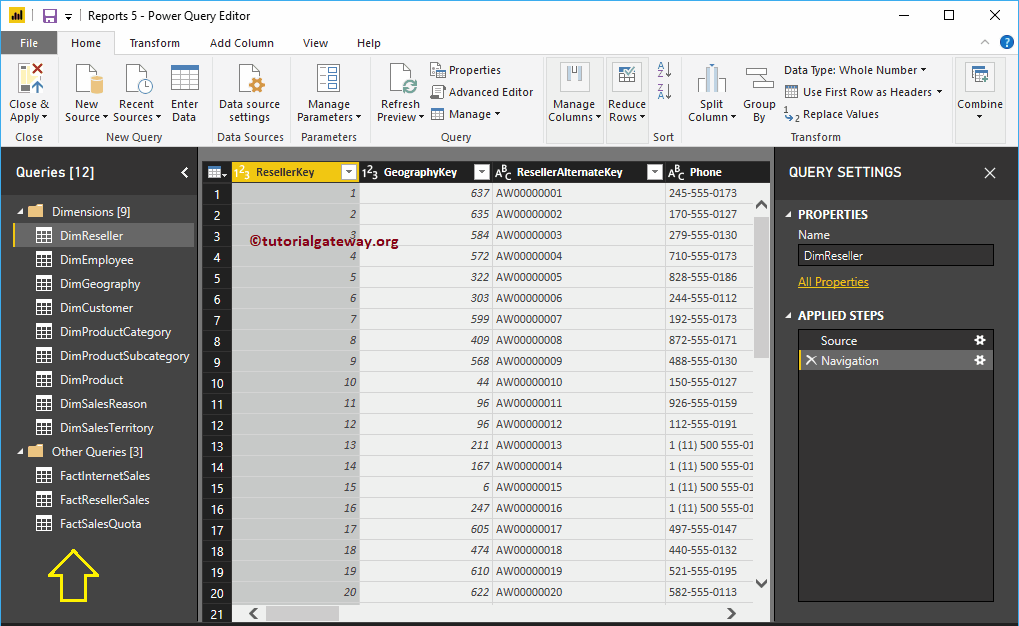
The second approach to create Power BI Query Groups
To create a new query group, right-click on any table will open the context menu. Please select the Move to Group option, and then select the New Group option.
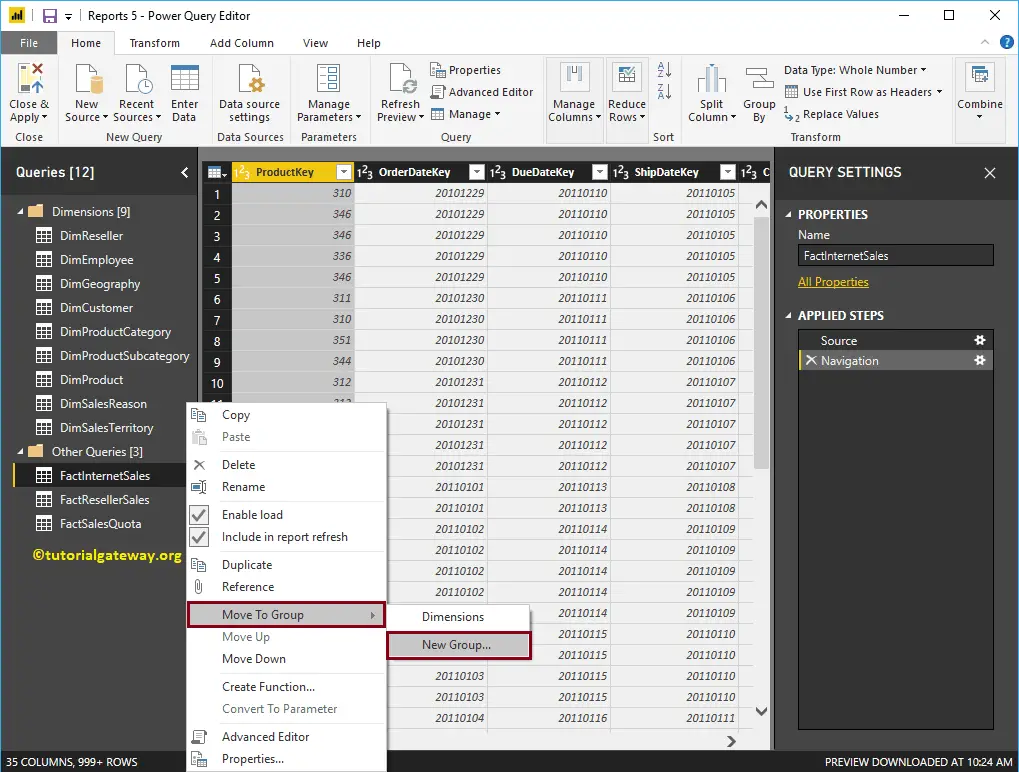
Selecting the New Group.. option will open the following window. For now, we are assigning the Group name as measures.
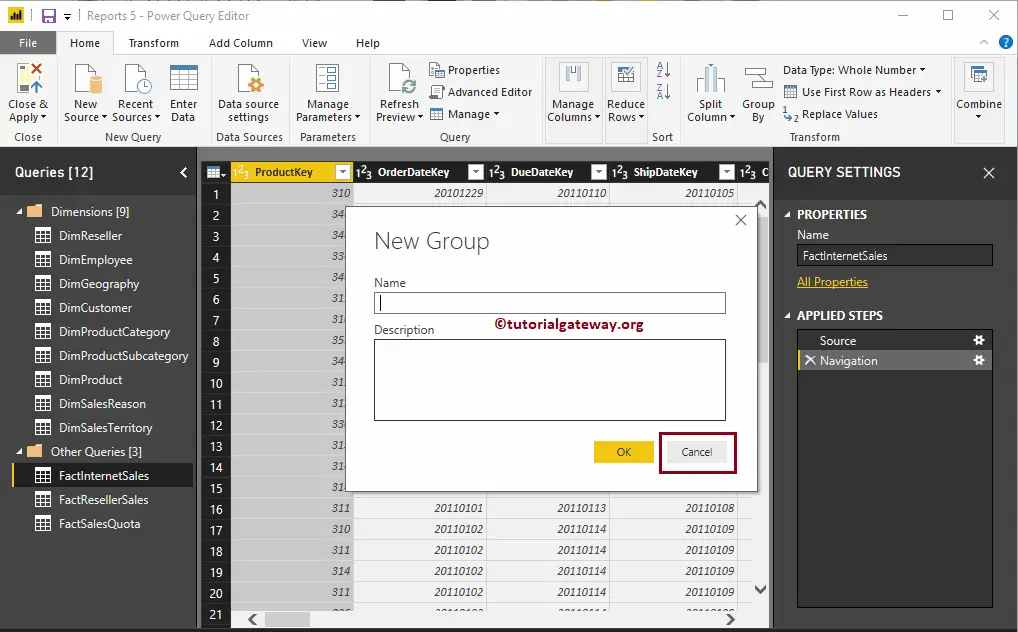
Rearranging tables in a Power BI Query Groups
By simply moving the table up and down will change the table position.
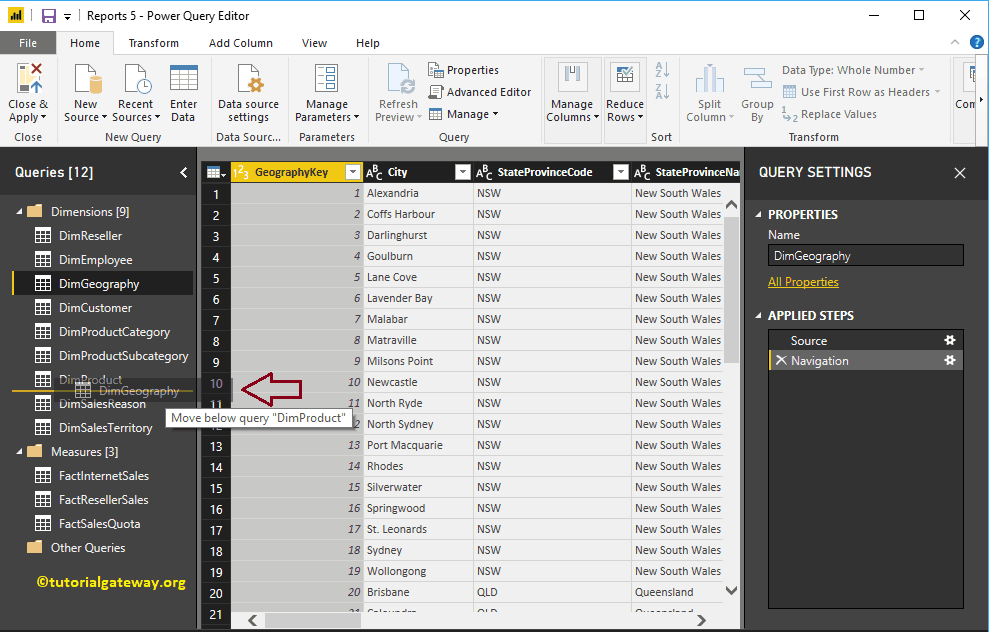
Alternatively, right-click on the table that you want to move will open the context menu. Please select the Move Down or Move Up option. For the demonstration purpose, we moved Dim Employee table to down.
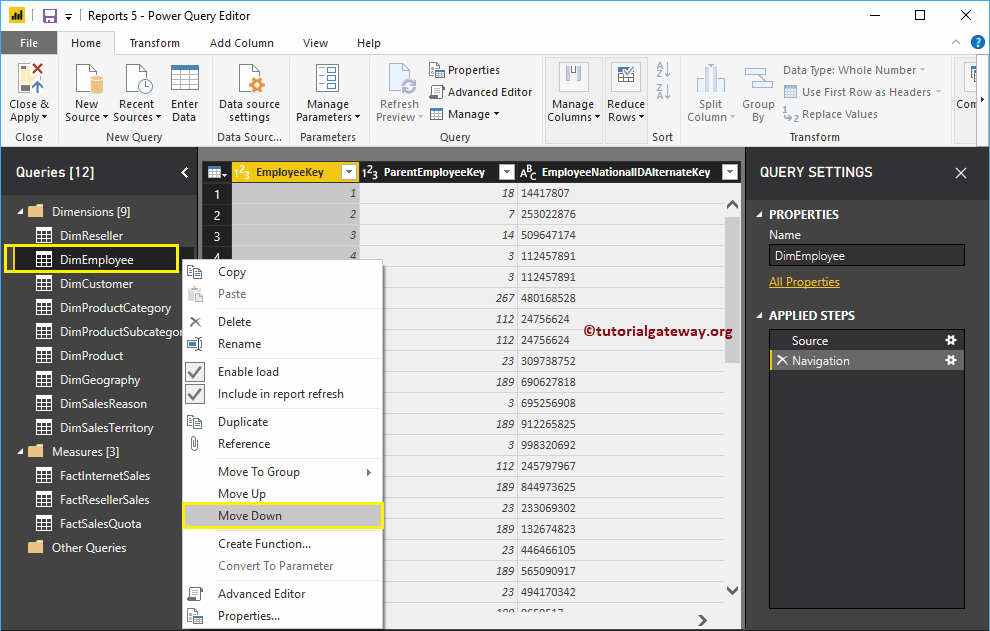
Now you can see the Dim Employee table in the third position.
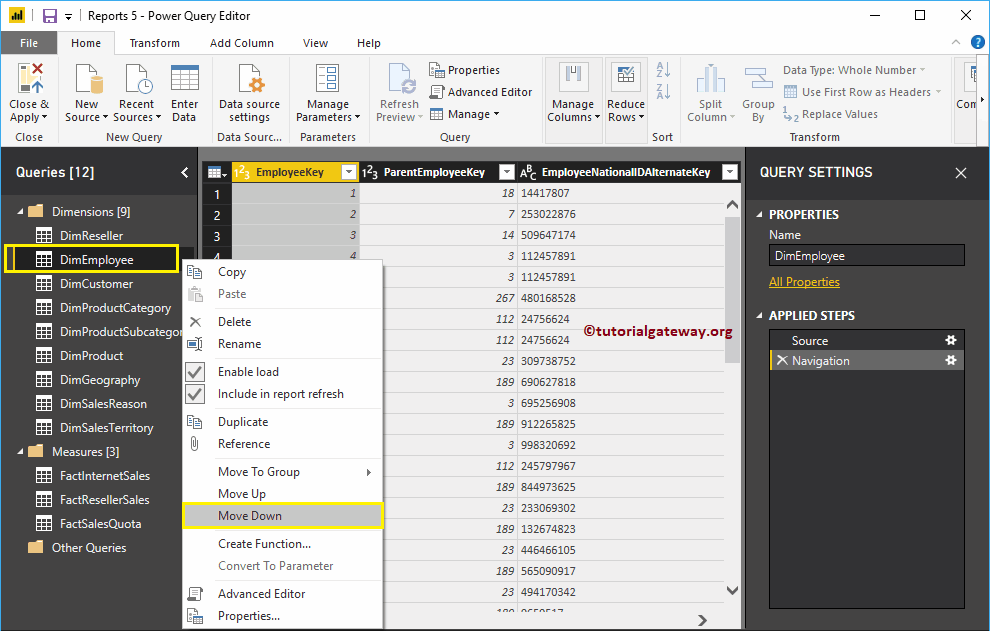
Delete Query Groups in Power BI
To delete the existing query group, right-click on the group name will open the context menu. Please select the Delete Group option.
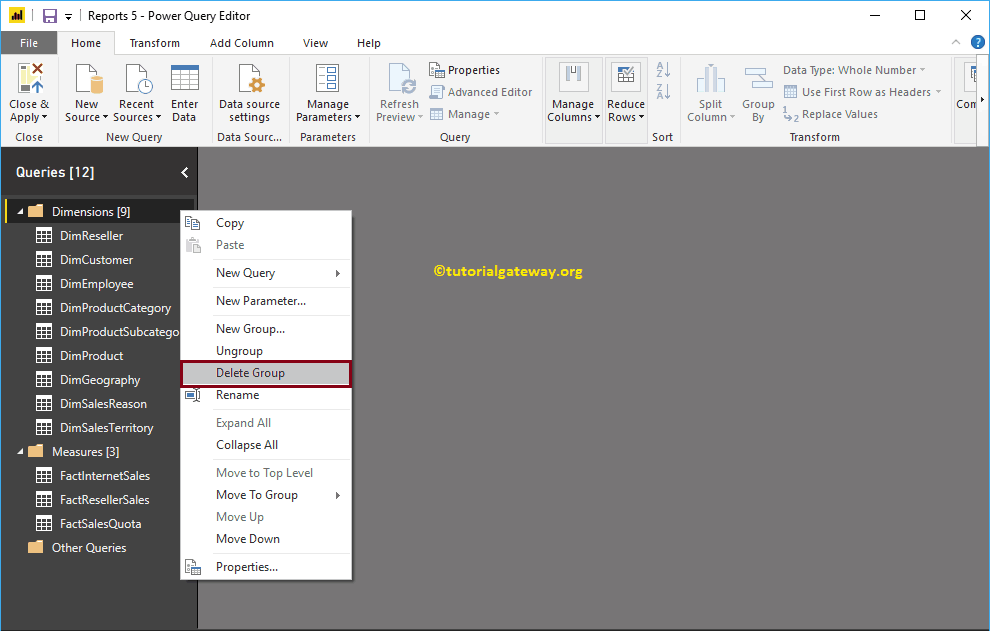
Selecting the Delete Group option opens the following message box. For now, we are clicking the Cancel button
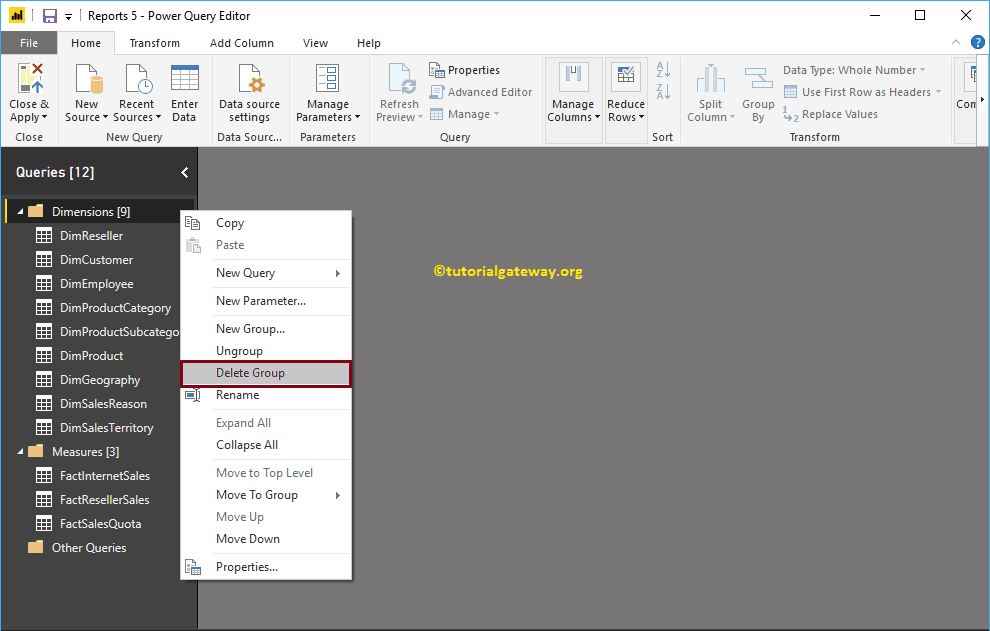
How to Ungroup existing Query Groups in Power BI
To ungroup or remove the existing group, right-click on the group name and select Ungroup option from the context menu.
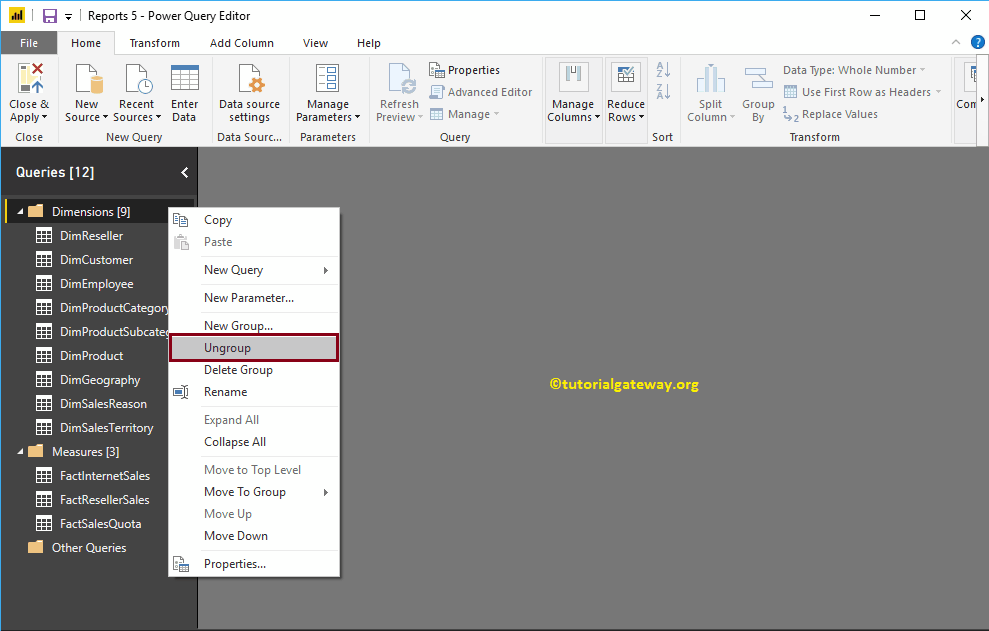
Now you can see that the Dimensions group removed.
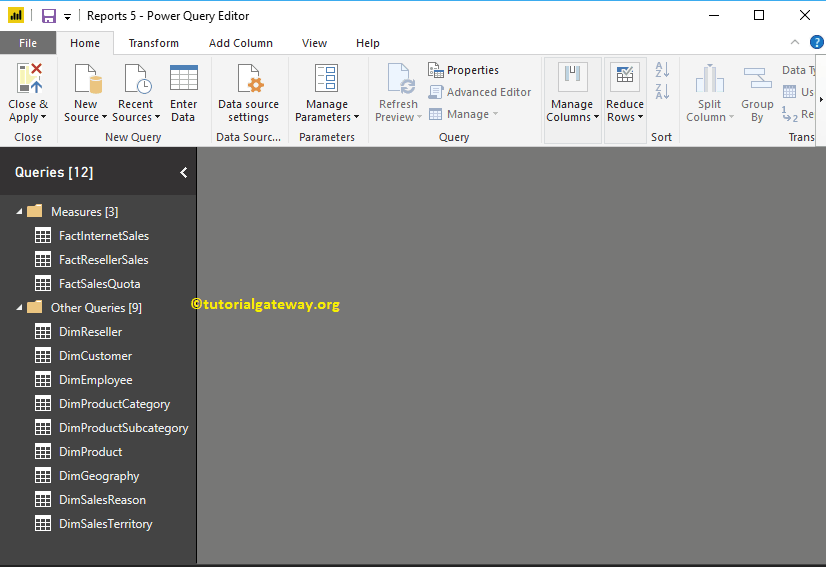
Nested Query Groups in Power BI
To add one group inside another group, right-click on the group name opens the context menu. Please select the Move to Group option and then select the Master Group name, i.e., Dimensions.
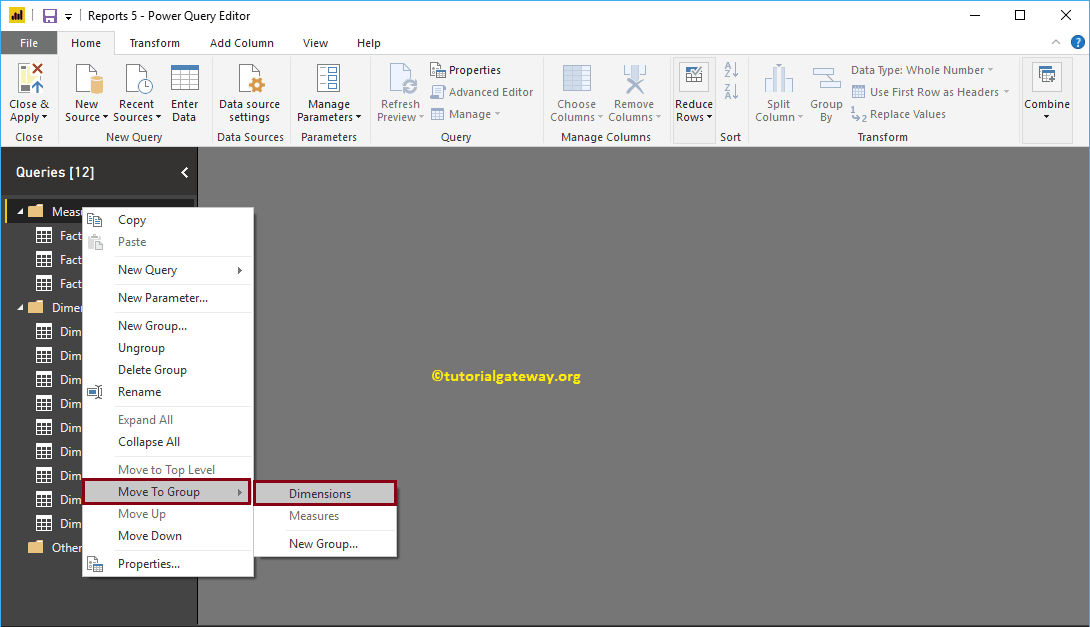
Now you can see that the Measures Group Nested inside the Dimensions group.
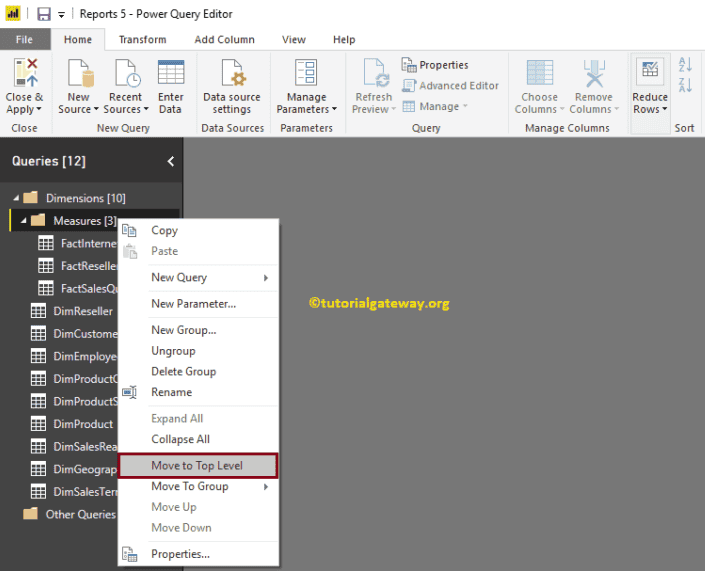
You can undo this by right-clicking the group name and selecting the Move to Top Level option from the context menu
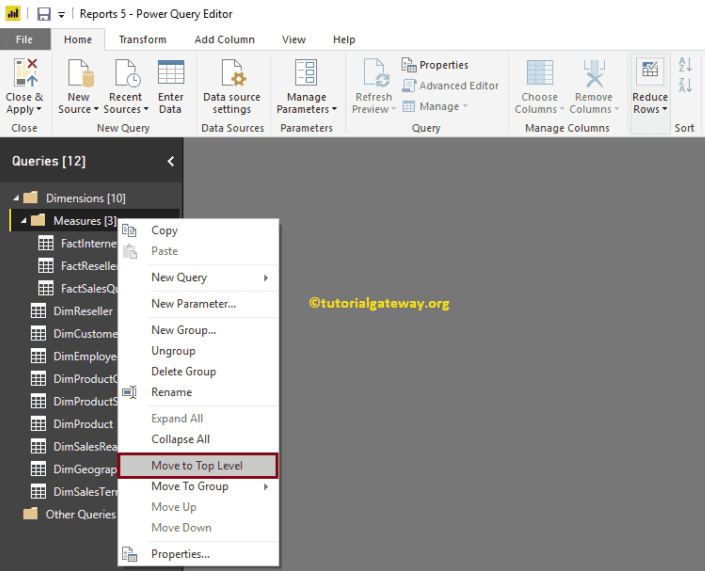
Whatever the changes you made (query groups) won’t affect until you hit Apply. Let me hit the Close & Apply option under the Home tab.
